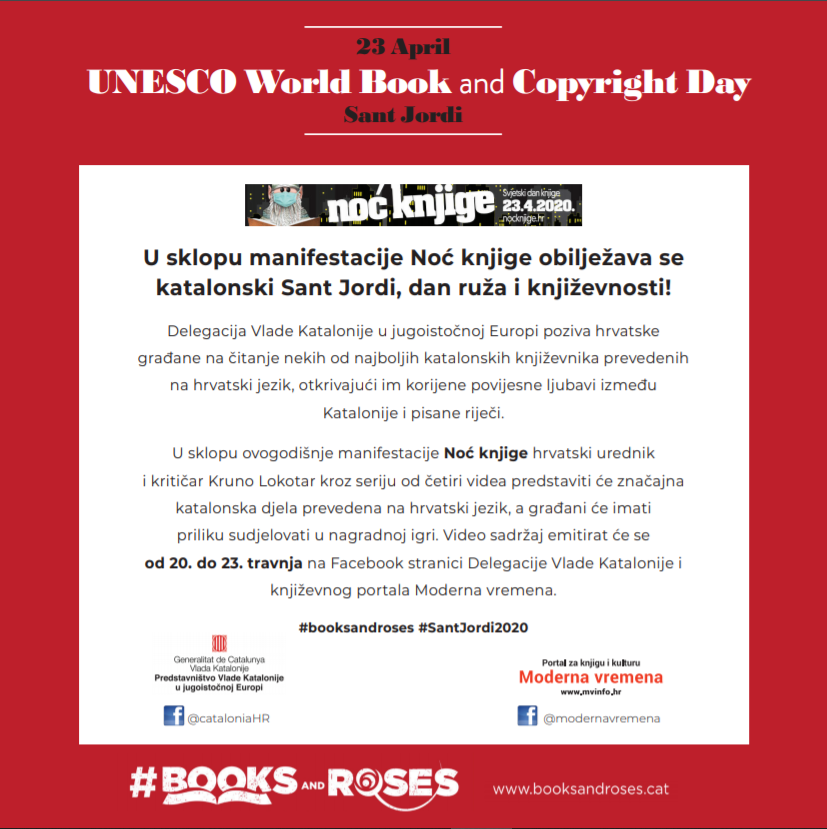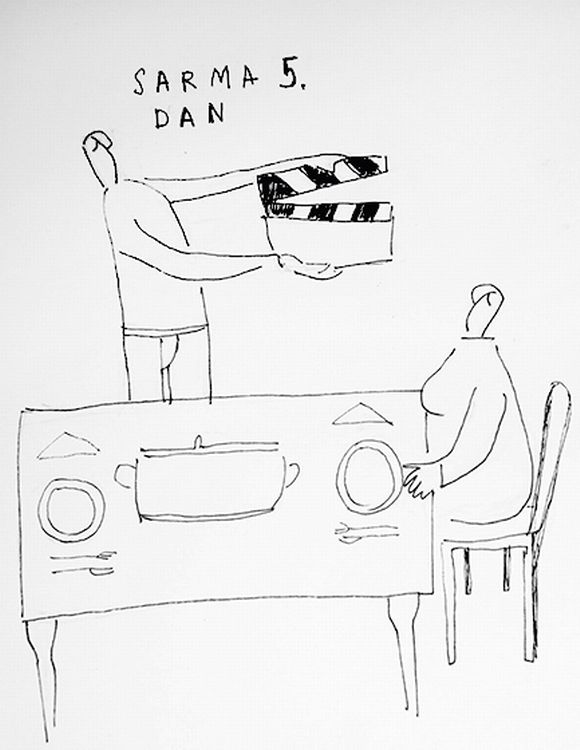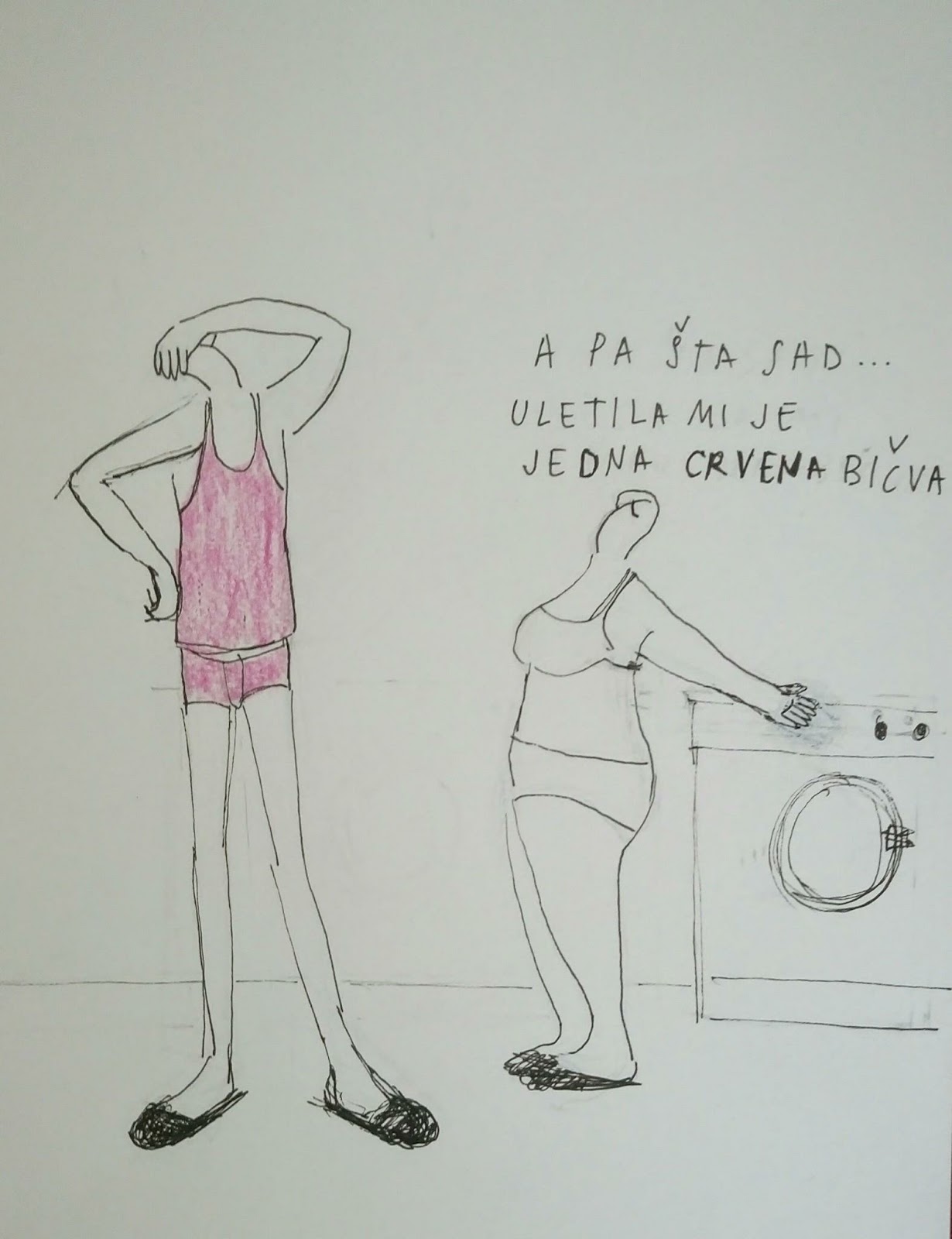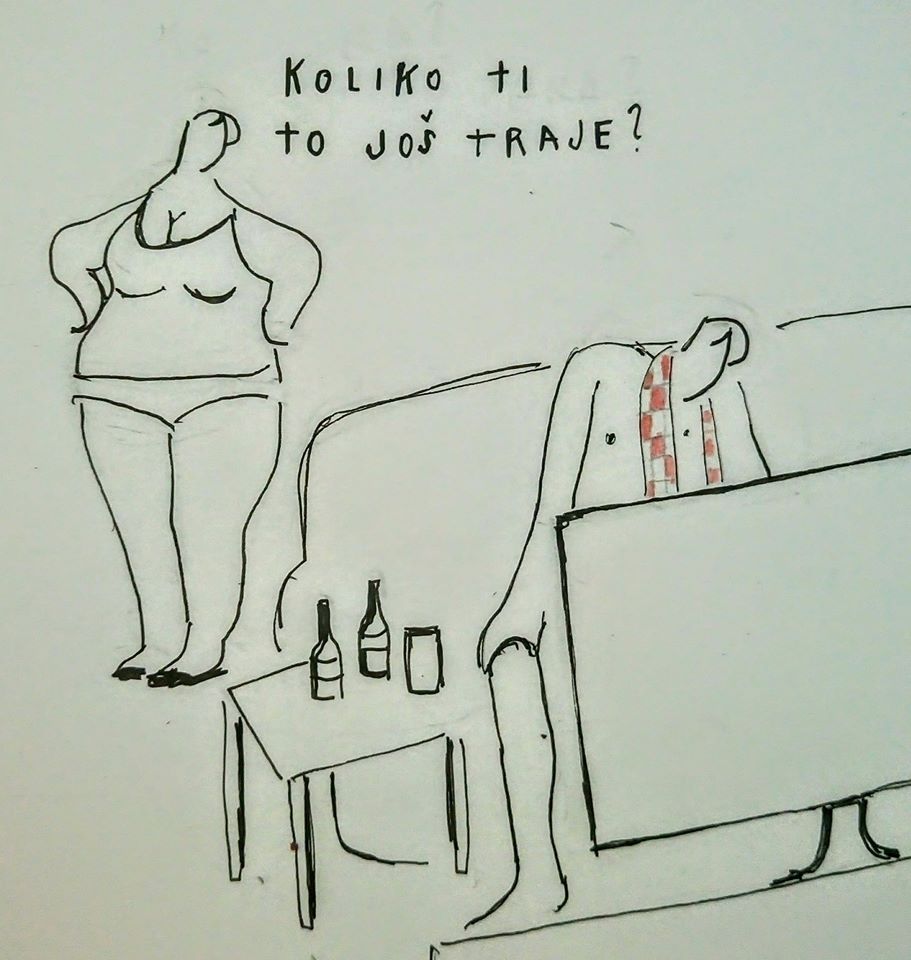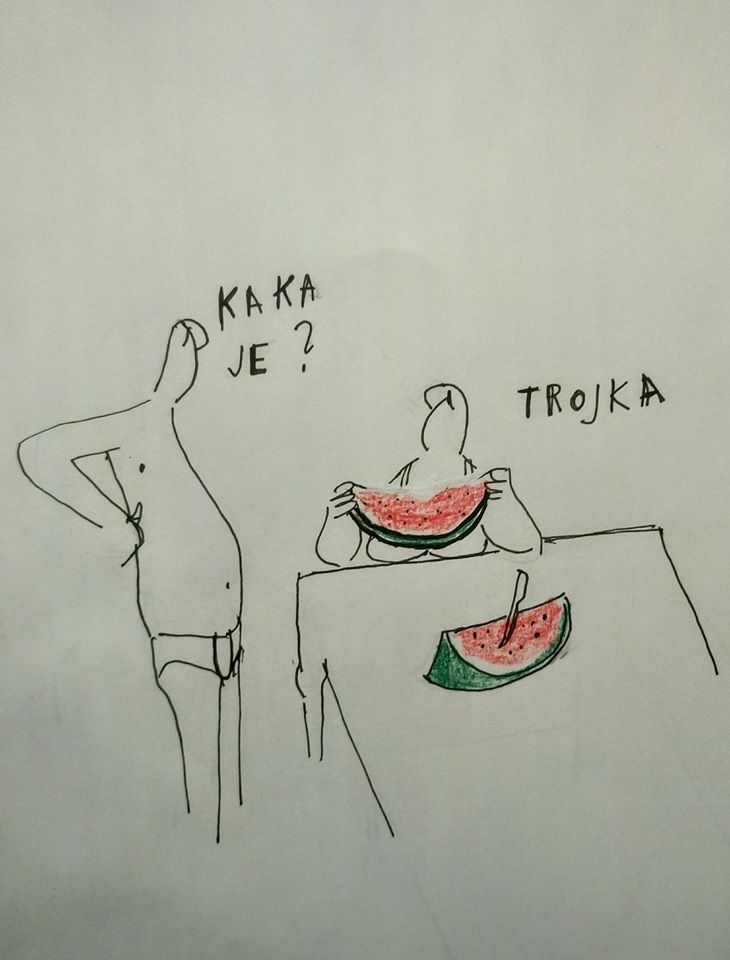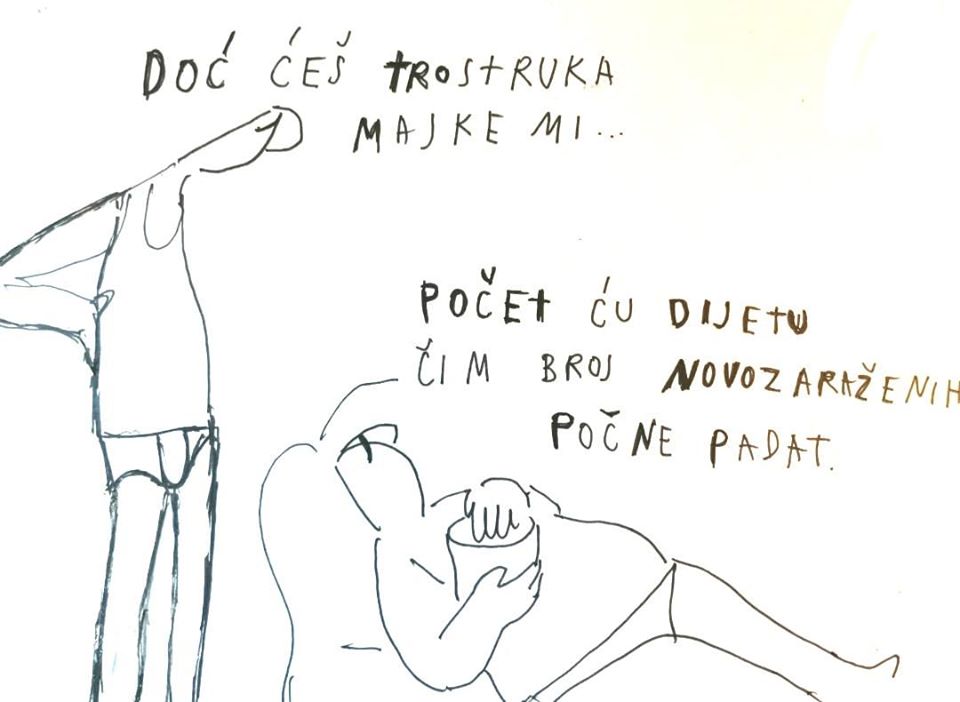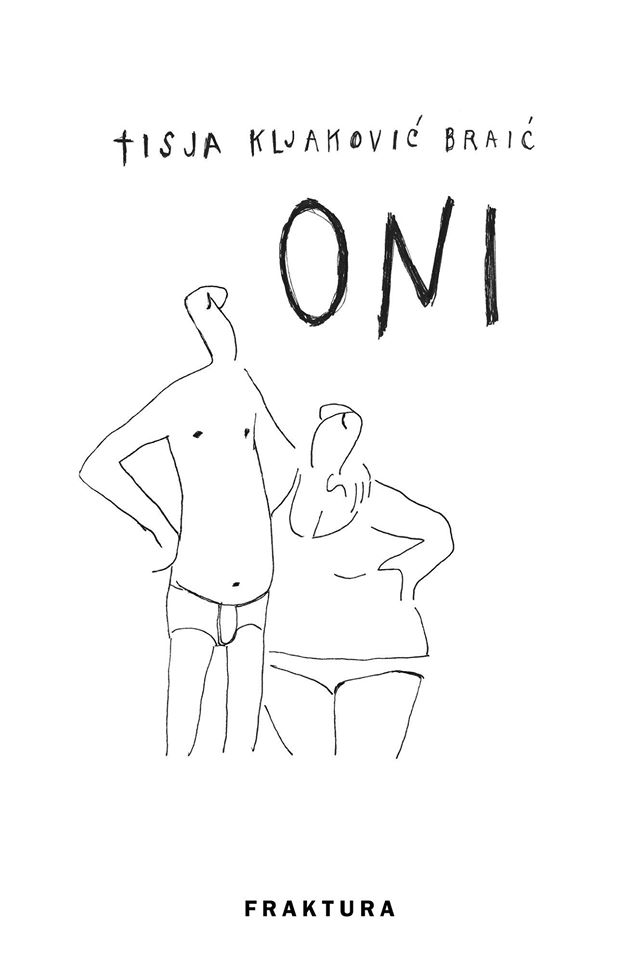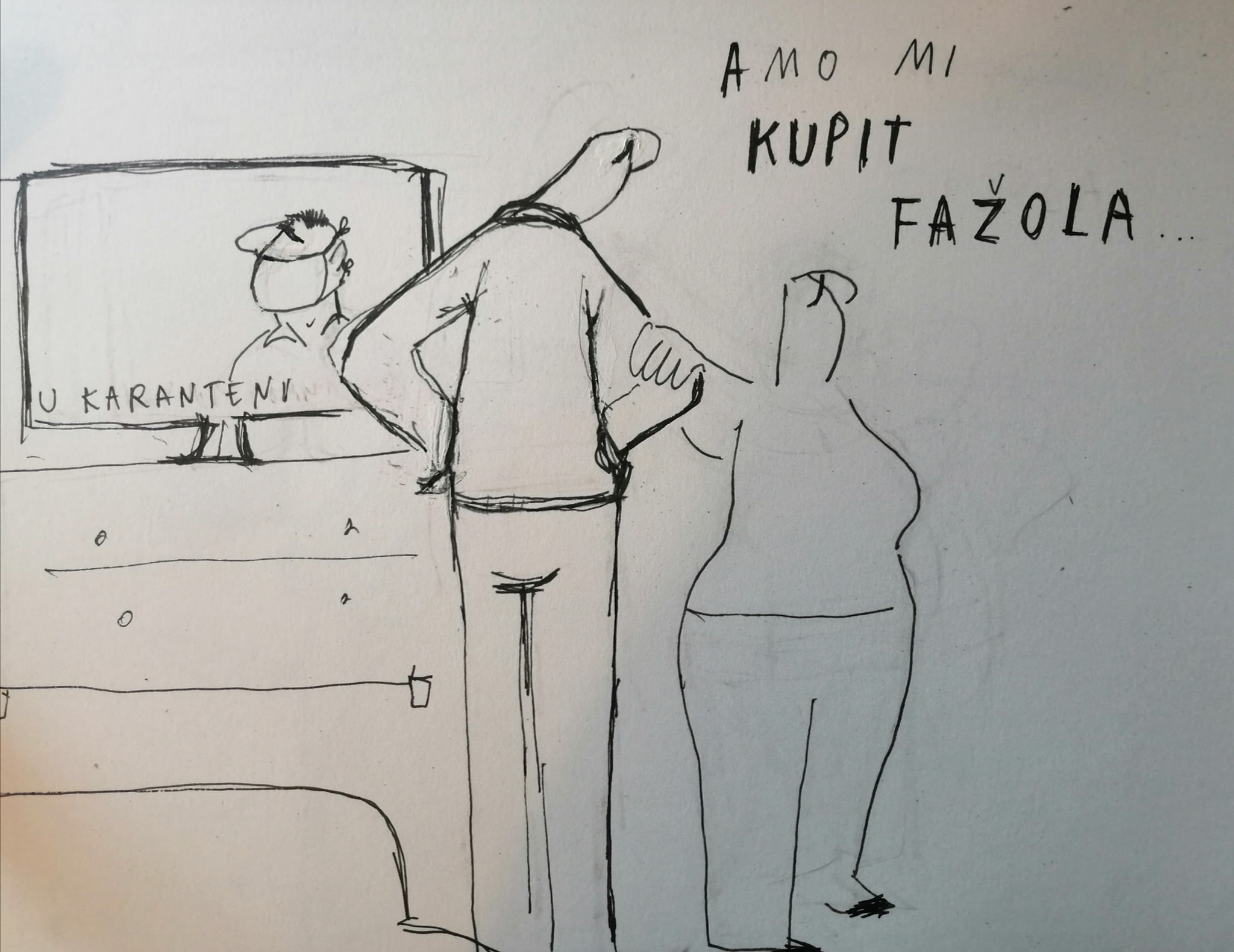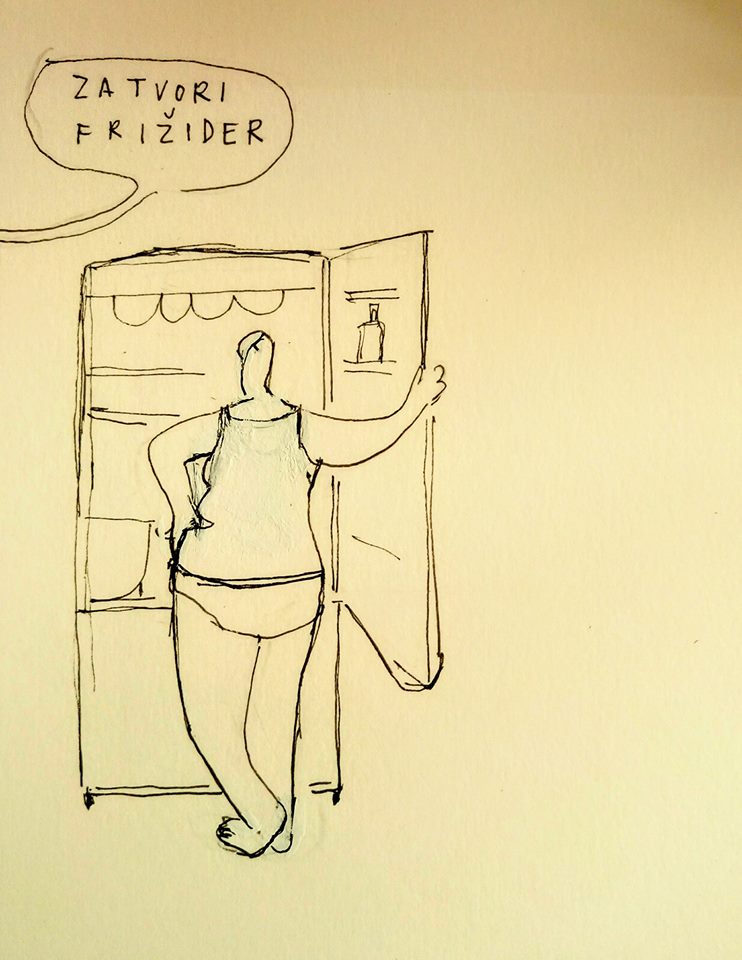A Tough Year Ahead for Tourist Boats in Dalmatia
April 21, 2020- The coronavirus pandemic is causing significant damage to all segments of the Croatian economy, with the tourism sector among the most affected. For tourist boats in Dalmatia, this year will be especially tough.
Dalmatinski Portal writes that in proportion to the number of new ships on the market, the number of passengers in the traffic of tourist boats increased from year to year, and according to the data of the port of Split, the third-largest in the Mediterranean, the number of passengers increased by 20% last year. This growth was expected this year, when an estimated 15 new tourist vessels were to sail in Split-Dalmatia County and five more from other coastal counties.
"At the moment, in the situation caused by the coronavirus, Dalmatian tourist boat companies are struggling to keep their reservations so far as they are being postponed to future dates, and by subscribing to Government measures and agreements with banks, regarding the extremely large loans that are a condition for building, renovating and preparing boats for the season, they are trying to overcome this difficult and uncertain period," says the President of the Croatian Chamber of Economy - Split County Chamber Joze Tomas, where the headquarters of the National Association of Tourist Boaters of the Croatian Chamber of Commerce is. According to the information received from the boat owners, the works on boats under construction have been stopped.
The President of the Association of Tourist Boaters of the Croatian Chamber of Economy, Ante Rakuljić, emphasizes that these boats are a real Croatian product, from construction and equipping to servicing in Croatian shipyards, employment of almost exclusively Croatian seafarers and supply of local food and Croatian products. Therefore, boating companies hope that their needs will be met and that banks will have an understanding and approve a moratorium on loans for a minimum of one year. For boat owners not in credit obligations, this situation will force them to take out loans to cover current liabilities and retain their workforce.
Like the rest of the business world, small tourist boat companies are keeping a close eye on the situation and are adjusting their plans day by day. A problematic business year and a possible complete absence of the season for boaters is certain. Unless the full return is possible, tourist boat companies believe that they will be able to adapt to new business conditions in terms of maintaining distance and hygiene, but this will require additional changes and investments, which means new responsibilities and reduced capacity and number of passengers.
At the moment, they are at a standstill. The current loss is also confirmed by one of the leading travel agencies in Croatia, the Katarina line, known precisely for cruising the Adriatic in luxury ships, which during normal circumstances, would have already been 15 days into the season, welcomng the first guests and groups.
To read more about travel in Croatia, follow TCN's dedicated page.
VIDEO: City of Split Shows Empty Streets in Spring
April 21, 2020 - Scenes from an empty Split in spring.
Dalmacija Danas reports that not even Croatia could escape the effects of the global coronavirus pandemic, though, with 1881 cases and 47 deaths so far, we are doing better than many other parts in Europe and the world.
Although Split-Dalmatia County is among the leading in Croatia by number of cases, over the last few days, there has been a significant decrease in the number of newly infected people, and due to the improved situation, we can now move freely within the borders of our county, excluding the islands.
The corona crisis already established a new normal and has completely shifted what we are used to in everyday life.
While we’d normally be embracing a sunny preseason spring, the measures in place by the National Civil Protection Headquarters to ban gatherings in public areas, public transport, and international travel, all while social distancing, have made Dalmatia unrecognizable in recent weeks.
While we’re used to welcoming the start of the preseason after Easter, this year, the tourist season in April is a loss. Because of this, some parts of the city are deserted, which was even more pronounced in March and early April.
A video was released by the City of Split showing just that - the streets empty and eerie, an image we hope never to see again.
On April 17, 2020, the City of Split sent a message to citizens:
"Dear fellow citizens of Split,
Thank you for following the instructions, measures, and decisions of the National Civil Protection Headquarters. Field reports confirm this, and hopefully the same will soon be seen in the growing number of people infected in our city.
We have a sunny weekend ahead, so once again we invite you all, no matter the weather, do not leave your homes without a real need. If you have to, then please keep an eye on social distance, keep a distance from each other. Do not go to public areas where it is strictly limited, beaches, playgrounds, parks, and sports grounds.
It is still extremely important to adhere to all instructions and decisions of the National Staff and to keep in mind that the success of all anti-epidemic measures depends primarily on ourselves."
To read more about travel in Croatia, follow TCN's dedicated page.
Croatian First League Will Not Return by First Calendar Option on May 16
April 21, 2020 - There are still 10 rounds to be played in the Croatian First League. The Croatian Football Federation announced that football would not resume in the first proposed calendar term.
The Croatian Football Federation on Monday announced that the competition in the Croatian First League would not continue until at least May 16.
"The Croatian Football Federation continuously monitors the situation with the COVID-19 pandemic and respects all decisions of the Civil Protection Headquarters of the Republic of Croatia.
Following the new decisions of the Civil Protection Headquarters of the Republic of Croatia and extension of the measures until May 4, 2020, HNS decided that the continuation of the competition in the First HNL will not start on May 16, which was the first of three scheduled dates for the continuation of the competition.
Given the unpredictability of the SARS-CoV-2 pandemic, the HNS will continue to cooperate and follow the instructions of the Civil Protection Headquarters of the Republic of Croatia and make decisions in accordance with the epidemiological situation in Croatia, and will inform all its members, the media and the public in a timely manner," HNS said in a statement.
The Croatian First League competition was terminated on March 12 after 26 rounds were played. The remaining options to continue the competition are May 30 and June 13.
Recall, the Executive Board of the Croatian Football Federation adopted changes to the competition calendar in the 1st and 2nd Croatian League and Croatian Cup, taking into account the current COVID-19 pandemic.
According to the recommendation of UEFA, the Croatian Football Federation (HNS) management has considered all the options in the calendar to allow a successful end to the competition year. Considering that the further course of the coronavirus pandemic is unpredictable, the HNS Executive Board has adopted three calendar options for the Croatian First League, Second League, and Croatian Cup competitions.
HNS has been in communication with the Central State Office for Sport on this subject, which is aware of and agrees with the decisions cited here.
Depending on the epidemiological situation in Croatia and the decisions of the competent authorities, the Executive Board will, by a specific decision, determine which version of the competition calendar change will apply.
In addition, the Olympic Committee has set deadlines by which it will announce a possibly selected version of the decision:
Option 1
1st HNL Competition Starts: May 16, 2020
2nd HNL Competition Starts: May 23, 2020
Completion of the 1st HNL and 2nd HNL Competition: July 18, 2020
Deadline: April 20, 2020
Option 2
1st HNL and 2nd HNL Competition Starts: May 30, 2020
Completion of the 1st HNL and 2nd HNL Competition: July 25, 2020
Deadline: May 4, 2020
Option 3
1st HNL and 2nd HNL Competition Starts: June 13, 2020
Completion of the 1st HNL Competition: August 2, 2020
Completion of 2nd HNL Competition: 1st August 2020
Deadline: May 18, 2020
By the end of the championship, 10 more rounds should be played, and at the moment the league was interrupted, Dinamo led in in the standings with 65 points, Rijeka is in second with 47, Lokomotiva in third with 46, and Hajduk in fourth with. 45. At the bottom is Istria 1961 with 19 points and Inter and Varazdin with 17 points.
To read more about sport in Croatia, follow TCN's dedicated page.
Analysis: Coronavirus in Croatia Compared to Other European Countries
April 21, 2020 — I received some great observations from a colleague, so I asked him for permission to share them with you. He says that he is getting a little nervous about all sorts of things, and has started to keep his statistics for some European countries that are of interest to him. The statistics end on 04/18/2020.
Otherwise, click here for daily detailed visualizations of coronavirus data in Croatia, and for all our texts on this topic, see the keyword “koronavirus”.
The following are quotes and charts from a colleague.
The point in all the charts is that it makes no sense to express the absolute number of infected or dead or whatever by country because we mix potatoes and locomotives. It does not matter that Germany has over 80 million inhabitants, Belgium 11 million and Croatia 4 million. So I reduced everything to a million inhabitants and then you see things differently than what is said in the media.
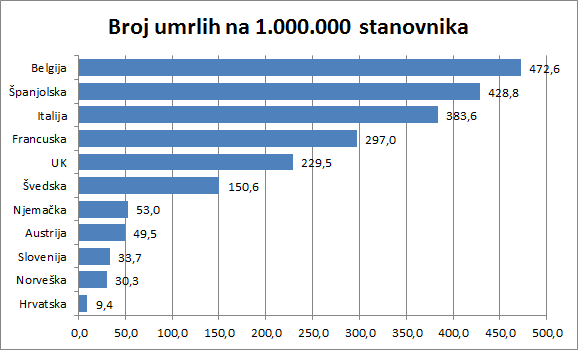
Coronavirus deaths per million population
This is the number of deaths from/with coronavirus. Of course, we don't know if all these figures are correct (the source is Johns Hopkins' coronavirus database), but let's say they are accurate enough to see the proportions.
So there is no doubt how good Croatia is relative to the others in terms of deaths. Comparing this with Sweden, the situation is 16 times worse than in Croatia. And we can't compare Sweden to Croatia in any way, and especially not to the strength of the health system or GDP.
This is a comparison of the number of confirmed infections (the actual number of infected people we do not know) again reduced to one million inhabitants. All start on day 1, even though the first patients registered in different countries on different dates. Here you see too much of the forest to make out the trees. In any case, one can see here who has straight curves, whose grew exponentially, and who has inflected. Who is the best? Croatia.
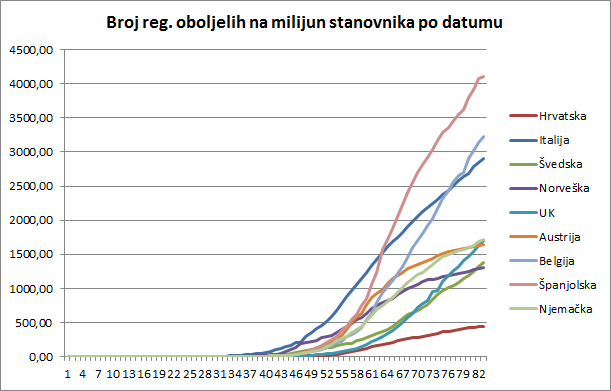
Number of registered patients per million population, on the same dates, regardless of the fact that the first patients registered in different countries on different dates
This to me is a far better overview. The curves here are not on the same date, but each begins on the date when the first diseased was registered in that country. Here you can see when who reacted and how.
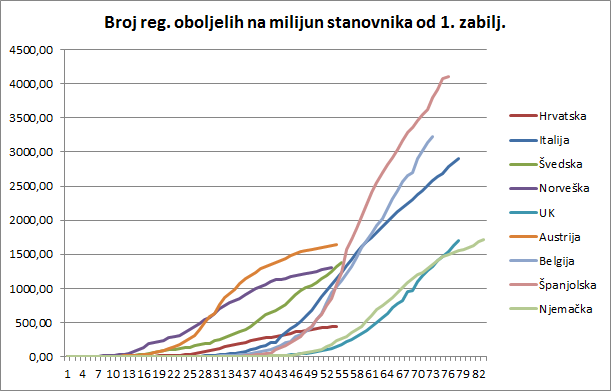
Number of registered patients per million people, on the dates when the first patients were registered
Of course, Spain has the worst curve in terms of relative numbers, but it slowly (unfortunately, very slowly) calms the epidemic. Italy is also slowing the epidemic. Belgium has a terrible situation, but the curve is flat. The worst is the UK, which has barely evened the exponential curve. These countries, including Germany, have waited a long time without serious measures with few infected.
The second group responded quickly: Austria, Norway, Croatia.
Of course, Sweden cannot be said to have truly responded. This is a special case.
It can be seen that, although it had a very rapid expansion of infected, Austria reached an inflection very fast - sometime in the 30th day from the first case, and calmed the epidemic. So there are reasons to loosen the measures.
In Norway, the spread of the infection started very shortly after the first patient, but relatively slowly, and has an even better result than Austria. Germany is also calming down its epidemic, similar to Austria, but the inflection is only about the 62nd day.
Who is the best? Croatia. Importantly, Croatia imported its first patients from Austria and Italy. But it reacted before both countries, a far larger and economically more powerful country. So Capak, Beros and Bozicevic knew what they were doing just in time.
Italy only has an inflection for the 69th day! Had she instituted drastic measures at least 15 days earlier, her situation would have been significantly different.
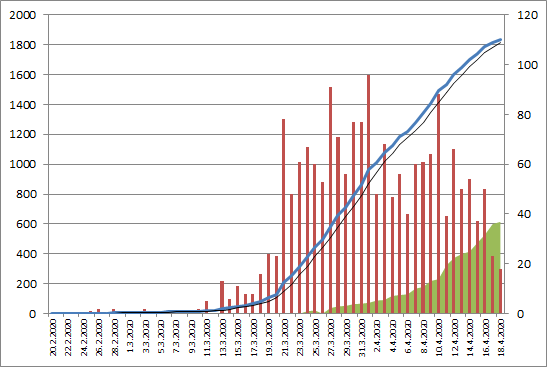
Number of patients in Croatia and trends
OK, this is known to everyone (I guess). The blue line is the total number of registered infected, the black thin line is a trend, the red columns are daily new infected and the green ones are recovered. It is important to know that Beros tells us every day how many recovered in hospitals and how many at home. This is very important. Many countries do not and have any idea how many (registered) patients have recovered at home.
But on the blue curve, it is very important that there are four areas. The first runs until March 21. when the epidemic started the way the epidemic started. From March 31 to April 1 are the results of the first measures to curb the epidemic. From April 1 to April 16 are the results of another set of measures. After April 16, though it is still too few days, something fourth is happening. Look at the slopes of the curve so you will understand.
I do not know exactly how the Croatian Institute of Public Health calculates that epidemic spread rate. Here are two ways of looking at it. The first way is looking at how many newly-infected are compared to the “ironed out” total infected. What does “ironing” mean? Croatia is small. A bus from Turkey arrives or a virus enters a home in Split or because of an earthquake we do not process all test swabs that day. But compensate for the next big changes in the curves. That is why I “iron” the curve in two ways, so that such jumps do not significantly affect this coefficient. And here's what I get:
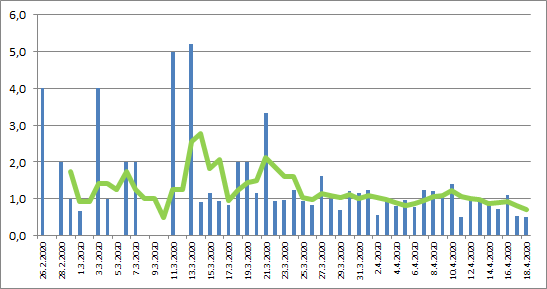
Ratio - how many newborns are compared to a little infested by then
The green curve is important. Not only has it been calm for quite a while (that's when they "leveled" the upper blue curve), but what matters is what has been going on in recent days. For the last six days, this green curve is below one, which means that the spread of infection is decreasing.
But there is one other curve, which is perhaps fairer: the relationship of the newly infected with the currently ill (thus, without recovered)! Here's that one (unironed):
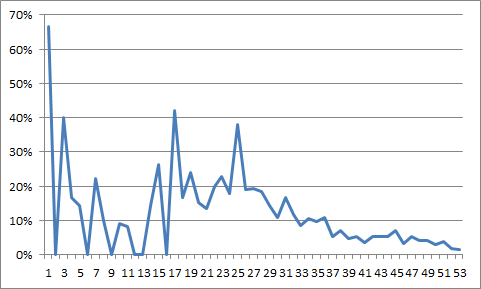
Relationship of newly infected with currently ill (thus, no recovered)
And that's good.
I received more contributions immediately. An excellent graphical representation of the testing ratio per million population and the percentage of positives shows who optimally tests and who does not. If you are about 10% positive you have found a good measure - Croatia is. Something ugly is coming to Brazil, only if the good weather saves them.
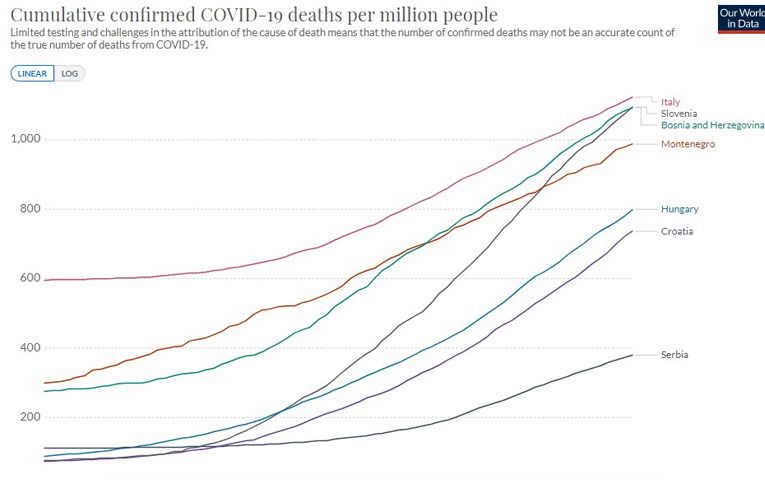
Comparison of the number of tests per million and the percentage of positive ones - by Milan Stevanović, April 18
I was also bothered by what Zoran Milanovic told N1: “There are many things for which we have no answers, but we go over them and continue to live. In January 2017, it was calculated that the death toll was 6500 that month. However, a year earlier 4500 people. From what? 2500 people more. There were no car accidents, suicides. Two thousand people have died more than average. It’s a scary figure and we knew it and no one responded. This was probably an epidemic of more severe flu, because in this seasonal prolapse more and more die, and so it is calculated because we do not test for the flu. But when you see that 45 percent more people died in one period than normal in a 10-year average in that month, something happened, we don't know what. "
Some people wanted to interpret it as seeing nothing happens when 2,000 people die from the flu, life doesn't stop. But that's the point - if the measures had not been activated the number of dead would have been at least 2,000 to 4,000 more as they die due to strong flu seasons such as 2014/2015 and 2016/2017 - see the data.
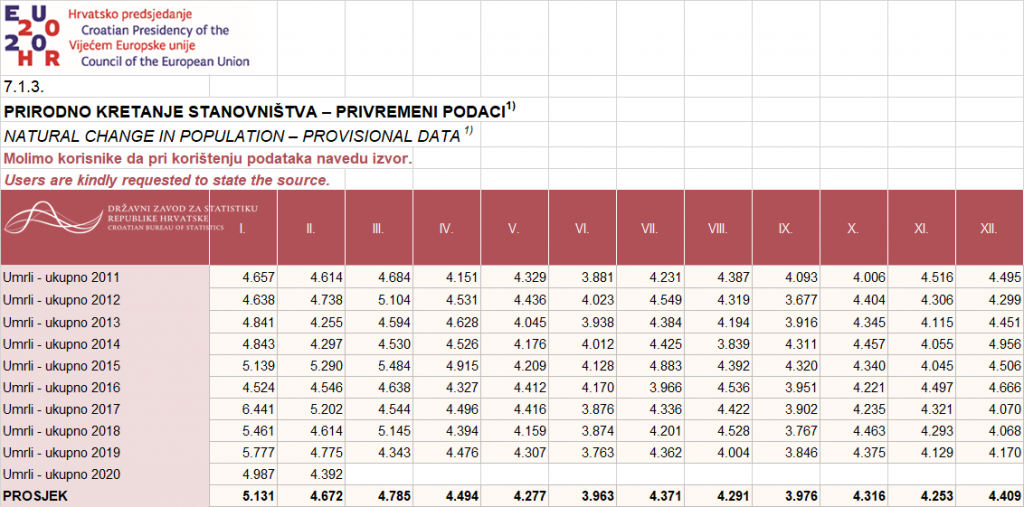
DSZ data on deaths by months
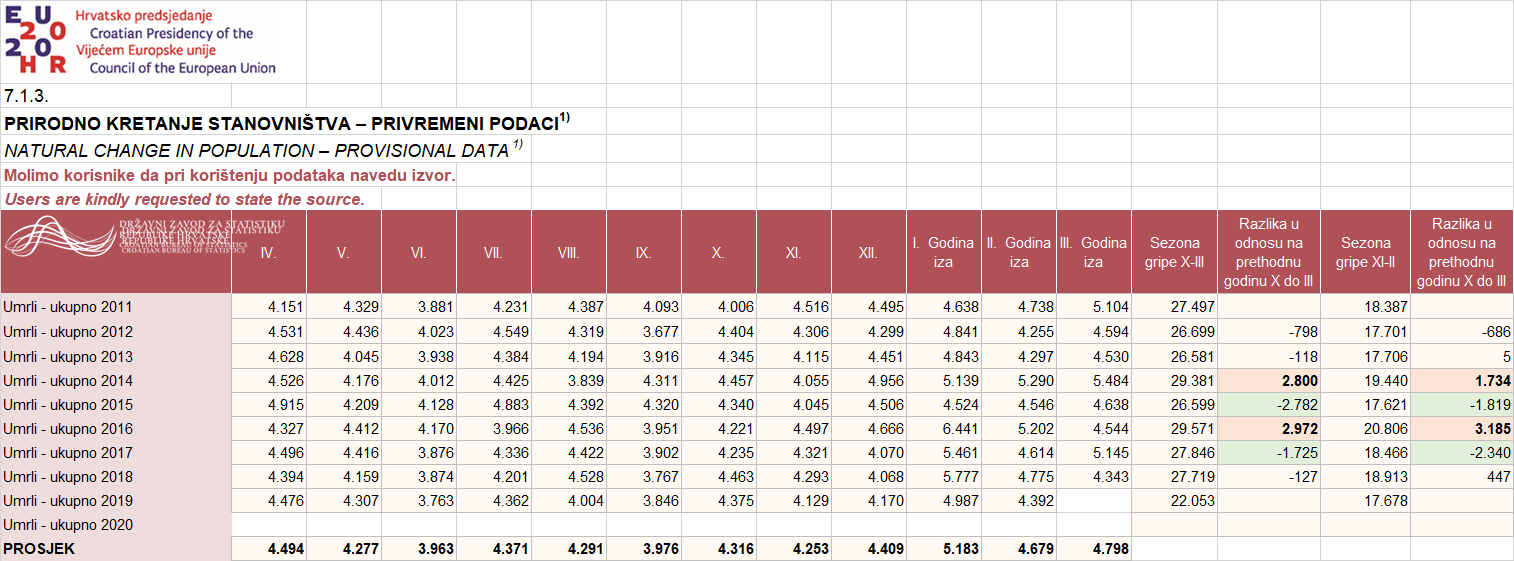
Data on deaths compounded by flu season
If you want to play and check yourself, you can find great visualizations and country comparisons here.
Croatia Celebrates Catalan Sant Jordi, Literature and Roses Day, for First Time
Zagreb, 20th April 2020 – How to foster a reading culture during the pandemic?
In order to foster a reading culture, especially during the self-isolation time, the Delegation of Catalonia to Southeastern Europe invites Croatian citizens to read some of the best Catalan writers translated into Croatian, revealing the roots of historical love between Catalonia and the written word.
During this years’ Croatian Book Night 2020 manifestation, an annual national programme aimed at the popularisation of reading and promotion of books, marking World Book and Copyright Day (23rd April), Croatian writer and editor Kruno Lokotar will present the most relevant Catalan writings translated to Croatian language through four videos. Videos will be posted on Delegation’s official Facebook page (https://www.facebook.com/cataloniaHR) from 20th to 23rd April 2020. During this period, Croatian citizens will have the possibility to take part in the contest and win some of the Catalan writings presented (Words for a Lapidarium, translated and selected by Tonko Maroevic; The Times of Doves, a novel written by Mercè Rodoreda, the most important 20th century Catalan author; Without fear, a book written by the most radical European nun, Teresa Forcades).
It is worth to mention the fact that UNESCO declared 23rd April as World Book and Copyright Day following the convincement of Catalan editors in 1995. However, this day is even more special in Catalonia because on this day Catalans celebrate Sant Jordi, Literature and Roses Day, throughout the world famous initiative “Books and Roses”. The initiative whose aim is to connect books, roses and love is globally spread manifestation which is celebrated in more than 50 countries all around the world every year.
People exchange books and roses as an act of gratitude. The roots of this celebration trace back from the mixture of history traditions. On the one hand, Sant Jordi has been patron saint of Catalonia since 15th century, and on the other hand the celebration relies on the famous legend about Saint George and the dragon (the knight defeats the dragon, who terrorized the village and the princess, and after killing the dragon, St. George gave the princess one beautiful red rose) as well as on the old medieval tradition of visiting Sant Jordi chapel in Palacio de la Generalitat in Barcelona, the place where the fair of roses or fair of the lovers had been usually held. That is the reason why Sant Jordi is also the patron of Catalan admirers. On the day of Sant Jordi more than 1,5 million books and 6 million roses are sold in Catalonia. Although this year’s Sant Jordi celebration will be held far from the libraries and bookshops, it will not minimize the significance of this globally recognized day neither the importance of the message it transmits.
Croatian Inspectors Seal 20 Restaurants Contrary to Tourism Ministry Instructions
April 20, 2020 - Glas Poduzetnika demands to enable the operation of Croatian entrepreneurs' restaurants.
The sad fact is that we became a slave nation that, through its supervisory activities, in an unprecedented situation in modern history, punishes small businesses who are trying to maintain work activity and keep job positions while letting global corporations work through drive-in facilities.
Yesterday, we received information about a large number of closed facilities due to the distribution of food in front of the objects or the food brought to the customer's car. As per their records, the decisions state the violation of article 9a of Hospitality and Catering Industry Law, i.e., "performing the activity contrary to the decision of Committee for Civilian Protection of Croatia (CZRH)."
"Yesterday, state inspectors banned work for 30 days and sealed off more than 20 restaurants in Zagreb, Rijeka, and other cities due to the handing food to the customers in front of the restaurant. Restaurants Tekka, Rustica, Čingač, and many more had to close. "This procedure will cause the additional unnecessary loss of several hundred jobs," said Vedran Jakominic, a member of the Board of Directors of the GLAS PODUZETNIKA Association and Vice-President of the National Hospitality Association. "Immediately after the decision of the Committee for Civilian Protection, a request was sent to the Ministry of Tourism related to this particular situation, and an official response was received at 15:20 h on 19th March 2020 stating the following: The customer can personally pick up the ordered food on the doorstep of the object or in its immediate vicinity. Regarding the queries on further interpretation following the inspection procedures against the instruction from the COMPETENT MINISTRY, CZRH did not respond, although the Committee's coordinator Mr. Karas on 2nd April 2020 pointed out the importance of clear and unambiguous interpretation of instructions, which would also be required from the Committee. All the listed restaurants acted per the instructions of the Ministry of Tourism and followed all security protocols, for which we have the documented correspondence."
The inevitable conclusion is that the formation of the Inspectorate which collectively assumed the responsibilities of inspection supervision in the name of the competent ministries was a rash decision without secured competencies since the Inspectorate acted contrary to the only valid interpretation of the instructions of responsible Ministry, which is superior to the Inspectorate. Upon the foundation of the Inspectorate, it was promised that all relevant regulations would be clearly stated on their website before they would enter the service. However, this promise was not fulfilled. It was guaranteed that the Inspectorate would primarily have the advisory role whose first step would be to warn on irregularities.
However, in the most challenging moment for small businesses, the Inspectorate does just the opposite and adds a new level of uncertainty to the plate of ever-exposed entrepreneurs. We have a gradual normalization with additional conditions ahead of us. Can we trust the Inspectorate that they will ensure uniform and precise treatment in the interests of all citizens, and even those who pay taxes? Actions per all available information were followed by a "reward" of 30 days of the closed object and a still unknown amount of the fine.
Entrepreneurs, do you feel protected? Do you feel calm and safe when representatives of Inspectorate, tax authorities, customs authorities, or representatives of the Ministry of Internal Affairs come to your premises? When they come to your battered offices, where you spend most of your working day and make every effort to do everything by the law, accounting by the rules? Do you feel safe and protected when you need advice, suggestions, or when you read laws that concern you? Do you have the confidence that when you do at the best of your abilities, per everything you have learned, when the authorities who are here to ensure the functioning of society on our behalf come, that they will correct you where you are wrong, refer to protocols and procedures, and explain the unknown?Article 49 of the Croatian Constitution says: "Entrepreneurial and market freedom are the basis of the economic structure of the Republic. The state provides all entrepreneurs with an equal legal position in the market. Monopolies are prohibited. The Republic contributes to the economic progress and social well-being of its citizens and takes care of the economic development of all its regions."We crave Croatia 2.0, where the work of the state and its bodies will be to carry out joint affairs of its citizens, following the Constitution of Croatia and for the benefit of all its citizens equally.On this occasion, UGP demands the removal of inspectors responsible for such actions, and their superiors who gave them such a task, from the service. They should be assigned to jobs according to their real abilities or finally share the fate of those in whose interests they should work, and become part of the statistics of the unemployed.
Why are we requesting this? For acting contrary to the instructions of the competent Ministry and for not reporting possible misinterpretation of the instructions, not asking for a correction, and not informing people who risked their health on the spot acting contrary to the advice of the epidemiological service. Because they were either arbitrarily punishing in this insane situation, or if they didn't, they allowed thousands of restaurant employees across the country to work outside the safety conditions provided by the expert team of people who are managing this crisis.We insist on the immediate annulation of all fines in these and similar situations, and on ensuring conditions for safe work in facilities. Besides, we demand that public sector employees include a novelty in their actions, which is the work in harmony and cooperation with entrepreneurs, rather than harassing, humiliating and punishing people who not only feed the private sector but provide for the National Treasury as well.
***
The GLAS PODUZETNIKA Initiative started as a citizens' self-organized group, most of which are small entrepreneurs, after the announcement of the first set of Government's measures, which the organizers deemed insufficient. The Initiative assembled more than 100,000 entrepreneurs, small business owners, self-employed, and the employees in the private sector in less than 15 days, drawing the media spotlight with its uncompromising requests and appearances. Considering this, GLAS PODUZETNIKA positioned itself as a relevant factor in public discussions aimed to determine Croatia's new economic direction. Its position was also confirmed by the Government of the Republic of Croatia, having included some of the Initiative's suggestions in the second set of economic measures, thus confirming Initiative's undeniable influence. At the request of the Initiative's members, the GLAS PODUZETNIKA Association was created and received more than 6,000 applications for membership until this moment.
To follow the latest from the Glas Poduzetnika initiative, follow them on Facebook.
Sjajne karikature života u Dalmaciji: Intervju s Tisjom Kljaković Braić
20. 4. 2020 – Kako prikazati jedinstvenost i briljantnost prekrasnog fenomena života u Dalmaciji? Upoznajte splitsku umjetnicu Tisju Kljaković Brajić, autoricu fantastične knjige karikatura dalmatinskog života, Oni.
Dalmacija je jedinstvena. Volim je do smrti, ali me jednako tako do besvijesti frustrira. Trebalo mi je 15 godina života ovdje da se pomirim sa svojim frustracijama, koja sad mogu sažeti u jednu rečenicu savjeta na novopridošle. Prihvatite ovu rečenicu savjeta od početka i živite prema njoj, i život će vam biti beskonačno bolji. Odbijte prihvatiti taj savjet i vjerojatno ćete ili iz frustracije odustati od Dalmacije ili ćete završiti tako da ćete je nakon par godina ipak prihvatiti i živjeti po njoj. Rečenica je jednostavna:
Nemojte pokušavati promijeniti Dalmaciju, ali očekujte da će Dalmacija promijeniti vas.
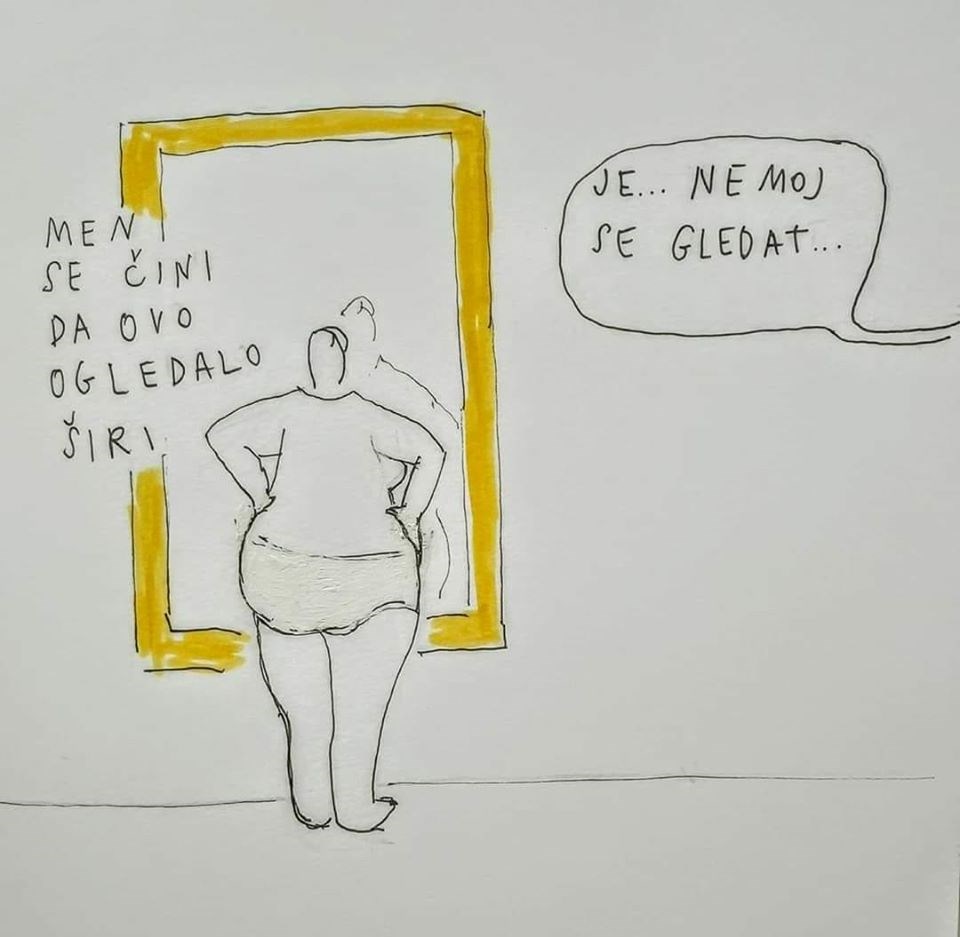
Toliko je toga posebno i jedinstveno u Dalmaciji, a među tim i navade Dalmatinaca. Kad kao stranac istaknem neke od njih, često me optuže da se referiram na zaostale stereotipe. Zato sam bio tako sretan kad sam prošle godine od supruge dobio zaista krasan Božićni poklon, knjigu “Oni” koju je napisala Tisja Kljaković Braić. Smijao sam se ostatak toga dana.
Tisja je pronašla malo vremena da mi odgovori na neka pitanja o knjizi, Dalmaciji i svojim planovima.
Priznat ću vam da se nikad nisam toliko smijao zbog Božićnog poklona, NIKAD, kao kad mi je supruga poklonila vašu knjigu Oni. Posebice zbog slike sarme. Recite nam nešto o knjizi, te kako ste odlučili napisati/ilustrirati je?
Oni su davno nastali u mojim slikama na drvu. Na njima Oni lete plavim nebom i rade sve šta se u pjesmama radi. U jednom momentu izasli su u formi crteža i počeli živjeti stvaran život. Mnogi te crteže nazivaju karikaturom mada ništa nisam iskarikirala. Naprotiv, ni zarez nisam promijenila da bi bili što životinji.
I tako, objavila sam prvi crtež na fejsu i počelo me veselit to da mogu nasmijati ljude. Ubrzo se crteža namnožilo i izdala sam knjigu Oni koja je doživila veliki uspjeh.
Ono što je Njih učinilo tako popularnima jest zapravo to šta su tako obični. Svak se u njima prepoznao. Mislim da je došlo do jednog zasićenja photoshopom i nestvarnim svijetom, a Oni nemaju filter.
Imate TOLIKO opservacija o životu u Dalmaciji. Kada ste ih prvo počeli primjećivati i koliko vam je trebalo da skupite kolekciju za knjigu?
Nisam nikad razmišljala o životu u Dalmaciji kad ga ja naprosto živim. Iz mene prirodno izlazi ono šta mi je u krvi. Mislila sam da zbog toga što predstavlja tipične Dalmatince knjiga neće bit zanimljiva dalje od Dalmacije, međutim desilo se baš suprotno. Evo i Srbi i Slovenci kupili su prava na knjigu.
Stil vaših ilustracija je jedinstven i vrlo prepoznatljiv. Recite nam nešto o njemu, te jeste li imali neke posebne modele u glavi dok ste stvarali ilustracije.
Uvijek mi je bio san da u tri poteza mogu nacrtat sve i napokon sam uspila. U crti koja glumi oko možete vidit kako ga ona gleda. Mislim da ih se u zadnje vrijeme može i uti. Njihov izgled, njihova razlika u visina... ma koliko se odupirala tome to smo muž i ja.
Međutim oni nose karakteristike naših roditelja, sve ono šta nam je išlo na živce i u šta ćemo se u skorije vrijeme pretvorit.
Knjiga Oni postala je svojevrsni bračni udžbenik.
Možete li nam reći kojih je vama omiljenih pet ilustracija iz knjige, te nam u jednoj rečenici objasniti zašto su vam one posebne?
Moja najdraža ilustracija nije uopće smiješna. Ima u sebi poeziju koju imaju moje slike. Zove se Pomirbeni nogododir. Mislim da se u njoj krije tajna braka.
Kako biste u jednom pasusu objasnili sljedeće osobi koja prvi puta posjećuje Dalmaciju? a) mladog Dalmatinca, b) mladu Dalmatinku, c) dalmatinsku nonu, d) dalmatinskog dida?
Na to pitanje ću odgovorit ovako. Amarcord, Fellinijev Amarcord je to.
Koja stvar vas najviše frustrira kod Dalmacije i Dalmatinaca?
Zapravo to je isto kao da me pitate šta me ljuti kod mene same. Ima puno toga al neću kazat i neću priznat.
Koju stvar najviše volite kod Dalmacije i Dalmatinaca?
A šta volim kod sebe, o tome nije red govorit, nije se lijepo hvalit? Samo ću reć da ne bi promijenila kvart, a kamoli grad.
Što je sljedeće u kreativnom svijetu Tisje Kljaković Braić?
Sve šta sam napravila napravila sam bez plana i programa i ne pada mi na pamet da ikad išta planiram. Evo i knjigu koju sam napisala o svom djetinjstvu U malu je uša Đava napisala sam sebi za uspomenu. U jedanaesti mjesec u HNK Split trebala bi bit premijera predstave po toj knjizi…
Sve što radim je upravo ono što me u tom trenutku čini sretnom, i ne razmišljam o ničem dužem od tog trenutka.
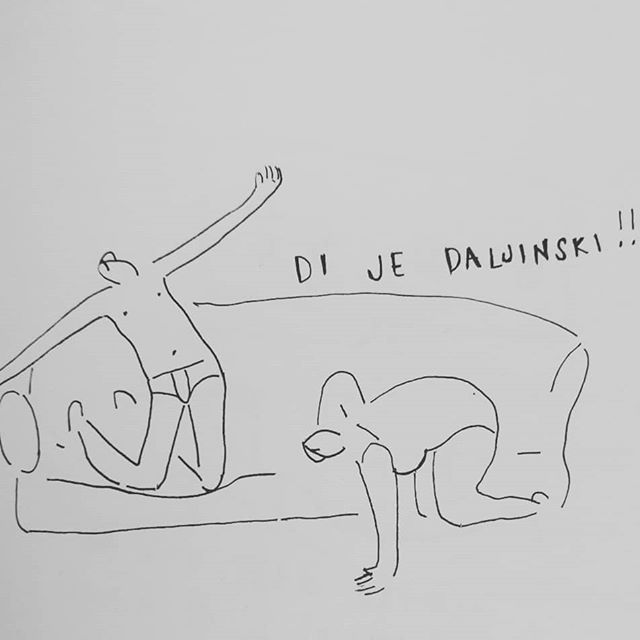
Hvala na intervjuu, Tisja, i hvala za mnogo smijanja. Ako želite dodati malo smijeha u svoj dan, možete zapratiti Facebook stranicu Tisja Kljaković Braić Art.
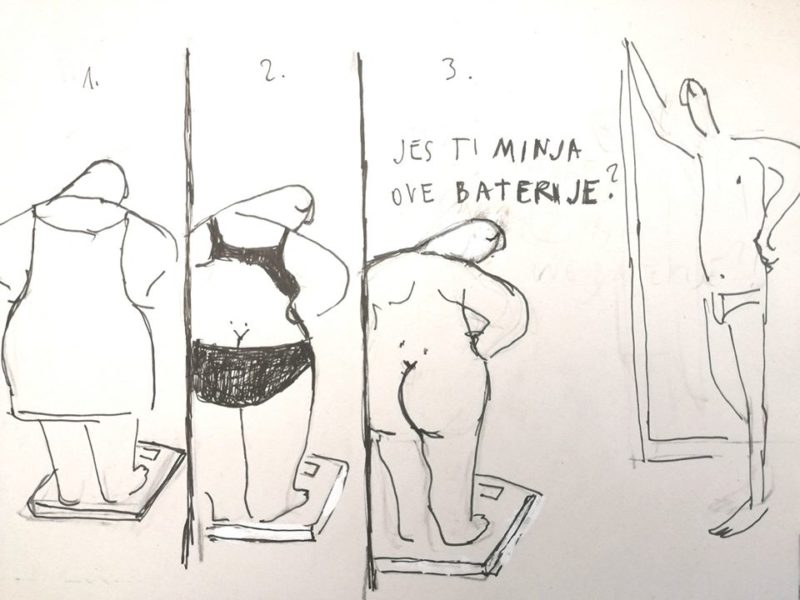
Croatian Tourism In the Age of Corona? Czech Agencies Have A Plan
April 19, 2020 — Czechs, who colloquially consider the Adriatic “our sea”, are trying to salvage their summer plans — and Croatia's tourism season in the process.
Travel associations in the Czech Republic proposed a model for a “corona corridor” straight to the Adriatic Coast, letting foreign visitors bypass a 14-day mandatory self-isolation period. The plan targets countries with a much lower infection rate that the Czech Republic itself.
“We have asked ministries to find a solution to save the summer tourist season or travel agencies,” Jan Papez, president of the Association of Czech Travel Agencies, told Jutarnji List. Croatia was among the first chosen because of its low rate of infection and deaths.
The association suggested the Czech government sign a treaty with countries successfully keeping COVID-19 at bay such as Croatia, Slovakia, but also some distant countries. The deal would allow mutual travel for citizens in both directions.
The proposal comes at a precarious time, as governments gently dip their toes into something resembling normal life, often reintroducing restrictive measures again.
The latest cautionary tale comes from Singapore, which brought the virus’s spread under control weeks before Croatia. It reopened its borders, only to have its caseload double as migrant laborers returned.
The Czech proposal calls for epidemiological oversight and health certifications, though health officials seemed skeptical.
Some epidemiologists warn the proposal may hurt current efforts to keep COVID-19 from overwhelming healthcare systems. Krunoslav Capak, the Head of the Croatian Institute for Public Health, downplayed the health certificate idea at a press conference.
“Health certificates do not mean much because a person may be ill 24 hours later,” he said. “In our view, tourists arriving in Croatia should either be quarantined for 14 days or should come from countries where the epidemiological situation is better than ours.”
Croatia’s Prime Minister Andrej Plenković jumped all over the plan, reaching out to Czech Premier Andrei Babis to discuss the idea.
U kontekstu odličnih odnosa ?? i ?? razgovarao sam s češkim kolegom @AndrejBabis te smo dogovorili da nam ministar @CappelliGari i ministrica @DostalovaK predlože prihvatljiv model dolaska ?? turista u ?? tijekom ovogodišnje turističke sezone. @Croatia_hr pic.twitter.com/mP13qZadq5
— Andrej Plenković (@AndrejPlenkovic) April 17, 2020
Tourism Minister Gary Cappelli on Friday promised to discuss the proposal with his Czech counterpart Klara Dostalov.
"We are determined to find opportunities to realize this, and with similar practices, we would work with other interested markets," Cappelli said.
The minister will lead a conference of tourism ministries around the continent on April 27, where the Czech plan will be discussed, among others.
The Czech Tour Operators Association found fertile ground for the plan with their Croatian counterparts.
"This Czech initiative for us is a great signal of what this year's tourism season may resemble,” said the director of the Croatian Tourism Association, Veljko Ostojic, according to Jutarnji List. “But when and under what conditions, the National Directorate has to determine.”
Ministers in both countries warned against getting too excited, pointing to a long list of variables that haven’t been settled, including transportation, health and epidemiological measures, healthcare capacity and, of course, the virus itself. Cappelli himself tamped down initial optimism.
“Neither [the Czech travel agencies] nor others have much space for work and travel now,” he said. “They are looking for somewhere to go to sea. They somehow find it easiest to get to Croatia. Will they succeed in doing so or not? We will see. It depends not only on us but also on other countries.”
The plan calls for state-verified health certificates declaring travelers COVID-free, allowing trips to other less-infected countries and bypassing mandatory self-isolation measures. Special air and road corridors would allow the speedy transfer to a tourist’s destination. Early plans include direct connections from Prague to Dubrovnik and Split.
Dubrovnik Mayor Mato Franković considers the idea fantastic, according to Jutarnji, but emphasized the need to reconnect the Pearl of the Adriatic to airline passengers in other major European hubs.
Prominent members of Croatia’s tourism industry welcomed the Czech proposal.
“The Czechs are exactly the market we counted on the most,” the director of the Split-Dalmatia County Tourist Board Joško Stella, according to Jutarnji List. “It was clear to us that they might be the first to show a tendency to come to the Adriatic, which is why we are in constant contact with them.”
Ostojić and others worry that the Croatian knack for drowning everything in bureaucracy may kill any plans to salvage the season.
“It is important to know what the procedures will be like at the borders,” Ostojić told Jutarnji. “Whether passengers will stand in columns and fill in paperwork, which means that we should not expect much tourist activity.”
Czech tourists often carry the unfortunate stereotype of low-spending, high maintenance guests, eliciting eye-rolls among certain older members of Dalmatia’s hospitality industry.
But that doesn’t stop them from vacationing on the Dalmatian coast, which remains one of the most popular destinations for Czech tourists. Over 800,000 spent holiday in Croatia last year for 5.4 million overnight stays.
The Dalmatian coast is so synonymous with Czech vacations, the nation’s vacationers call it “our sea.”
Registered Unemployment Rate in March 8.6%
ZAGREB, April 20, 2020 - At the end of March, there were 1.515 million employed persons in Croatia, which is almost the same number as in the previous month or 715 fewer workers, while the number of job-seekers rose by 4%, sending the registered unemployment rate up by 0.3 percentage points to 8.6%.
Data from the national statistical office (DZS) shows that there were 1,515,174 employed persons in the country at the end of March, an annual increase of 0.5%.
In mid-March Croatia introduced restrictions to step up the fight against the coronavirus epidemic, which has caused a decrease in monthly employment figures for trades and freelance professions and an increase in the number of the unemployed.
Statistics show that at the end of March the number of workers in legal entities, which employ the largest number of workers, rose mildly on the month while in trades and freelance professions it dropped by more than one percent.
According to DZS data, at the end of March legal entities employed 1,314,034 persons, 0.1% up or 1,309 more employees than at the end of February this year and 0.7% more than in March 2019.
Month-on-month, the number of employees in the real estate sector rose the most, by 1.2%, to 9,220 employees.
The number of workers dropped the most in the catering industry and tourism, by 3.3% to 67,000.
A total of 181,959 people worked in trades or as freelancers at the end of March, which is 1.1% down from February.
According to figures from the Croatian Employment Service (HZZ), at the end of March there were 143,461 job-seekers, which is 5,484 or 4% more than in February. Year-on-year, the number of job-seekers dropped by 1.6%.
The registered unemployment rate in March stood at 8.6%, 0.3 pp more than in February.
The number of job-seekers continued rising in April as well, and according to daily figures available on the HZZ website, there are currently more than 155,000 job-seekers, so the registered unemployment rate is expected to continue growing.
More economy news can be found in the Business section.
Donation of Huawei Tablets for Zagreb Families
ZAGREB, April 20, 2020 - Public Administration Minister Ivan Malenica and the Director General of Huwaei Croatia, Zhang Heng, on Monday visited Zagreb families who were left without their homes in the March 22 earthquake and are living in a student dormitory in Zagreb, donating to them Huawei tablets worth HRK 250,000.
The Chinese technology company donated 170 MediaPad T5 10 tablets to families affected by the earthquake.
Minister Malenica spoke with citizens about their everyday routine in the temporary accommodation, recalling the possibility of using digital services, which would help them in coping with their current situation, the ministry said in a press release.
"It is in situations like this that digitisation is the key and all its advantages come to the fore - even though we are distanced, we are connected," said Malenica.
We wanted to relieve the everyday routine for fellow citizens affected by the earthquake who were compelled to vacate their homes. We hope that these tablets will help the youngest keep up with online lessons and provide older users with access to timely information as well as facilitate contact with family members and serve as a way to occupy one's free time, Zhang Heng said.
More IT news can be found in the Business section.

